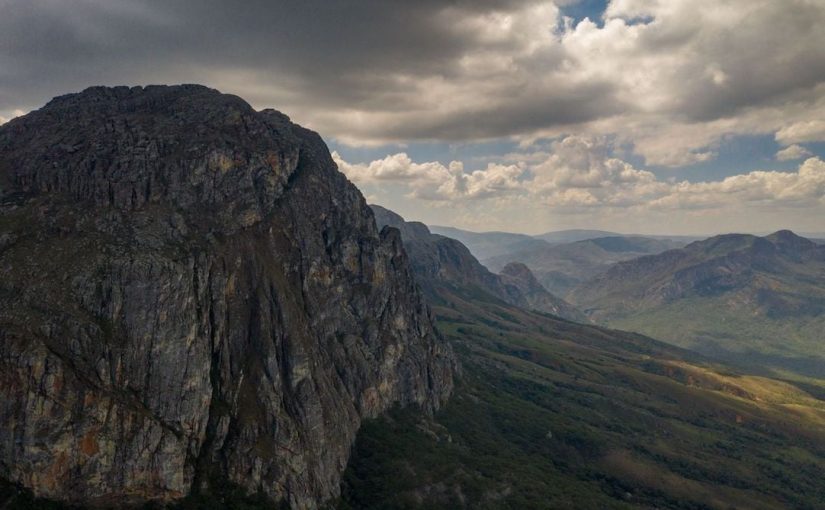Mozambique: Polana Hotel launches customer loyalty program
Mozambique on The National Geographic list of main destinations fr the year 2022 – featuring Chimanimani National Park

Photo: ANAC
Announced exclusively on its official website, for the year 2022, National Geographic editorial teams around the world have selected 25 “must see” destinations. These are spread across five categories – nature, adventure, culture, sustainability and family – with a focus on national parks and wildlife, outdoor activities and experiences, eco-travel and multi-generational travel.
At the end of each year, the tradition is that travel editors release their annual recommendations on where to travel next year.
Several media outlets around the world are highlighting the disclosure of the main destinations for the year 2022 by National Geographic.
CNN stands out among other prestigious media in the world. Although the pandemic is far from over, there is hope that 2022 will be the year when one can finally travel to the best destinations in the world.
“With this year’s list, Nat Geo takes a look at what is different, new and inspiring – from the new Seine River bike path in France to Chimanimani National Park, a new national park in Mozambique that signals the country’s environmental commitment. ” – said George Stone, executive editor of National Geographic Travel.
National Geographic ‘Best of the World 2022’ List:
SUSTAINABILITY
Chimanimani National Park, Mozambique
Ruhr Valley, Germany
Yasuni National Park, Ecuador
Łódź, Poland
National Columbia Gorge Scenic Area, Oregon / Washington
CULTURE
Jingmai Mountain, Yunnan, China
Tin Pan Alley, London
Hokkaido, Japan
Procida, Italy
Atlanta, Georgia
NATURE
Caprivi Range, Namibia
Northern Minnesota
Lake Baikal, Russia
Belize Mayan Forest Reserve
Victoria, Australia
ADVENTURE
Seine river bike path, France
Costa Rica
Nepisiguit Mi’gmaq Trail, New Brunswick, Canada
palau
Arapahoe Basin, Colorado
FAMILY
Danube River Cruise
Lycia, Turkey
Grenada, Spain
Bonaire
East Coast, Maryland.
The Chimanimani National Park, located in the district of Sussundenga, in the province of Manica, has a total area of 2368 km² distributed as follows: Total Protection Area 685 km² and Buffer Zone 1683 km² and was initially established as Chimanimani National Reserve by Decree no.º 34/2003 of 19th August, to safeguard the protection of the ecosystem that is characterized by rich biodiversity, flora endemism, and the importance of the Chimanimani massif as the sources of various rivers.
This Park is characterized by Afromountain vegetation with Miombo mosaics and is the sixth center of flora endemism in southern Africa (the Park has at least 73 species of plants that cannot be found anywhere else in the world). It stands out as one of the few areas with mountain elephants and other species of medium and small mammals, as well as 164 species of freshwater fish. It also has unique species of birds, reptiles and butterflies and is an area of springs, which feed the main rivers in the Provinces of Manica and Sofala.
In the socio-cultural aspect, there are caves used during the resistance struggle against colonial occupation, and Rock Paintings are recorded along the Chimanimani mountain range, where the highest mountain in Mozambique (Mount Binga) is located at 2436 meters of altitude. .
Pursuant to article 64 of Law No.º 16/2014 of 20th June, amended and republished by Law No.º 5/2017 of 11th May, ten categories of conservation areas came into force, three of which are total conservation areas (Integral Natural Reserve, National Park and Natural and Cultural Monument) and seven for sustainable use (Special Reserve, Environmental Protection area, Official Coutada, Community Conservation Area, Sanctuary, Game Farm and Municipal Ecological Park). It was in these terms that, in application of the new Legislation on conservation areas and following a process that involved public consultations in the District, Province and harmonization with different sectors, the Council of Ministers decided through Decree no. 43/2020 of 17th of June, for the re-categorization of the Reserve into Chimanimani National Park, whose objective is to guarantee the protection of flora and fauna species, historical and cultural sites, the panorama and the ecosystem existing in this landscape.
Bordering Zimbabwe, the Chimanimani National Park is part of the Chimanimani Transfrontier Conservation Area, which results from a Memorandum signed between the Governments of Mozambique and Zimbabwe in 2001. The Chimanimani National Park is adjacent to the National Park of the same name in Zimbabwe.
In Mozambique, Conservation Areas (CA) occupy around 25% of the national territory and comprise Parks, Reserves, Official Coutadas, Community Conservation Areas, Environmental Protection Areas, Game Farms, among other categories of conservation areas. (x)
By Jennifer Guyton, Ivan Zacarias, Armando Chissano













Leave a Reply
Be the First to Comment!
You must be logged in to post a comment.
You must be logged in to post a comment.